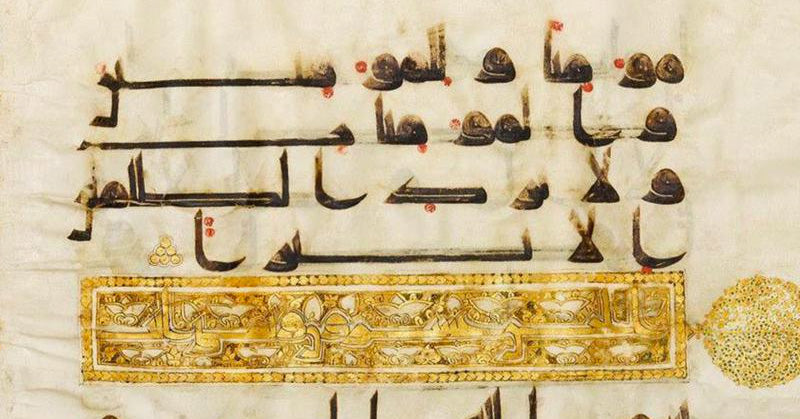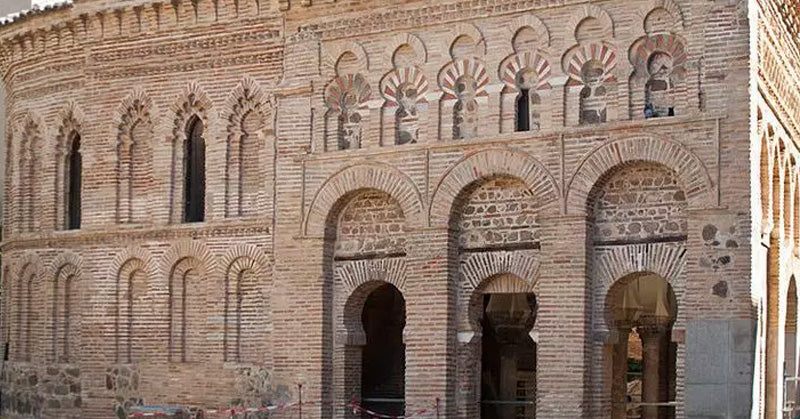Artículo: Arte islámico: características, obras, arquitectura y mosaicos
Arte islámico: características, obras, arquitectura y mosaicos
En sus inicios, el Islam tuvo su presencia en la península Ibérica entre los años 711 y 1492, siendo Andalucía el último bastión del Imperio musulmán en España. Por ello, los monumentos considerados como más relevantes del arte islámico se encuentran dentro del territorio andaluz.
Al hablar del arte islámico en España, es posible observar que las obras arquitectónicas más destacadas se localizan en los territorios de Granada, Córdoba y algunas provincias andaluzas, colindantes entre sí y que estuvieron bajo dominio musulmán durante los distintos periodos de la Edad Media.

¿Qué es el arte islámico y sus características?
El arte islámico se define como una corriente de orden artístico desarrollada en su generalidad por todas aquellas personas que practican la religión islámica. Como todas las figuras relacionadas con el arte, tiene una larga trayectoria en el tiempo y en todo lo relacionado con la geografía a nivel mundial.
El arte islámico, debido a su expansión, siempre tuvo un componente de unión muy fuerte, esto se explica porque si bien los artistas musulmanes siempre estuvieron en constante movimiento, la escritura islámica llegó a ser común a todos ellos.
Este factor preponderante hizo que el arte islámico evolucionara de una manera muy cohesionada, lo que hizo que mantuviera intactos los valores de la geometría y la decoración. Además, el arte islámico tiene una presunción de homogeneidad geográfica y temporal, factor que no es habitual en el arte.
En vista de esto, es fácil distinguir tres tipos de arte islámico, que a continuación enumeraremos:



Otra característica destacada del arte islámico fue su arquitectura, y es que en su momento se crearon edificios que posteriormente tuvieron una función, ya fuera de orden religiosa o no. Entre este arte islámico han destacado las mezquitas.
También es importante señalar que no existía una corriente artística dentro de la escultura islámica. Sin embargo, dentro de muchos tipos de arquitectura, a menudo había tallas en marfil o cerámica.
Lo mismo ocurrió con la pintura, que en general predominó en casi todas las representaciones de libros profanos y divinos.
Todas estas características hicieron que el arte islámico se convirtiera en el arte predominante de cualquier cultura, lo que le permitió evolucionar a lo largo del tiempo a partir de una gran variedad de fuentes, a pesar del estrecho contacto entre la cultura islámica y otras culturas, como, por ejemplo, el arte romano, bizantino, paleocristiano, persa o todos los estilos de Asia central.
En ellas hubo incursiones turcas y mongolas, donde destacó el arte chino, lo que les permitió moldear y moldear el arte islámico en su arquitectura, pintura y escultura.
¿Cuando empezó el arte islámico?
El origen en el tiempo correspondiente al arte islámico se sitúa en el año 622, que se considera el año del nacimiento de la religión musulmana que, según la historia, se produce cuando Mahoma va de La Meca a Medina, debido a la intransigencia que existía respecto a su predicación y, de esta manera, cuando nace la religión islámica, su arte se generó prácticamente de forma instantánea.
Respecto al origen geográfico, se puede señalar que no hay un punto concreto, pero se dice que fue en la Bahía de Bengala, donde se originó, logrando expandirse hacia Medio Oriente, norte de la India, África y España.
Características del arte islámico
Todo tipo de arte destaca por sus múltiples características, las cuales están influenciadas por diversos factores, como la religión, la geografía y otras culturas que de alguna manera marcaron su desarrollo.
Por ello, el arte islámico tiene una serie de características que lo diferencian y distinguen del resto de artes, entre estas se encuentran:



Otra característica destacable es que solían absorber elementos de las culturas que conquistaban con frecuencia, como el arco visigodo y la cúpula bizantina. Solían reciclar el arte de otras culturas, ya que construían sus edificios sobre la base de los anteriores. Otra característica a destacar es que utilizaban composiciones geométricas con el fin de evitar cualquier tipo de representación de la humanidad. Cabe destacar que las técnicas de mayor uso en el arte islámico son generalmente el mosaico de tradición bizantina, el estuco, la escultura en relieve y el alicatado. Finalmente, la composición en el arte islámico se basa en la repetición de algunos esquemas geométricos, cuya forma es seriada, además de la composición formada por diferentes decoraciones y simetrías.
Obras de arte y arquitectura islámica
Entre los monumentos pertenecientes al arte islámico encontrados en España se encuentran los siguientes:





Torre del oro de Sevilla, foto de Guía de España.
A todos estos monumentos del arte islámico en España han tenido la suerte de estar unidos por innumerables torres, murallas y edificios, vinculados al arte musulmán y que, en la actualidad, aún se conservan en las distintas ciudades españolas.
Es por ello que, estableciendo la diferencia con otros tipos de arte, como el arte africano, el arte asiático o cualquier otro tipo de corriente artística, no hay posibilidad de conseguir arte islámico en algunas exposiciones ni en Madrid, ni en otras ciudades.
Por tanto, sólo queda disfrutar del paisaje donde el arte islámico consigue fusionarse con las ciudades españolas, sabiendo que la cultura islámica fue capaz de enriquecer de forma decisiva la arquitectura de la península Ibérica.
Antes de esto, una consideración de fuerte impacto fue que la cultura musulmana en España, surgió a partir de la creación de numerosas acequias y numerosos sistemas de riego o a través de las canalizaciones del agua que, en la actualidad, aún mantienen su uso dentro de una gran cantidad de localidades españolas.
Arte musulmán
El arte musulmán tiende a representar la naturaleza inanimada, lo que lleva a una predilección por las fantasías con un fondo naturalista, que tiene un carácter geométrico que surge como complemento de la arquitectura y la repetición de formas abstractas.
En este tipo de arte es frecuente la presencia de polígonos, así como de poliedros regulares o estrellados. Los musulmanes fueron grandes constructores, entre su arte arquitectónico se encuentran el palacio, la fortaleza y la tumba, además de edificaciones menos laboriosas como fuentes, arquitectura doméstica y baños públicos.
Su pintura estuvo siempre muy ligada al conocimiento de las matemáticas, ya que todos los motivos geométricos de su ornamentación eran extraídos de una fórmula poligonal. En su momento, las figuras geométricas se transformaron en números que a través de la repetición llegaron a determinar cadencias.
Obras mayores
Entre las principales obras islámicas consideradas de carácter excepcional se encuentran las siguientes:




Características
Al igual que cualquier corriente cultural y artística, la religión musulmana y el arte islámico tienen unas características muy singulares, que la identifican plenamente.
Entre estas características destacan las siguientes:
Este tipo de arte tiene su origen en el arte bizantino, paleocristiano y romano, ya que fueron estas las modalidades artísticas que vinieron a antecederlo. Para la religión musulmana, la decoración, la geometría y los grabados constituyen elementos artísticos muy inherentes a esta clase de arte. Entre sus técnicas artísticas más frecuentes se encuentran el estuco, el alicatado, la estructura en relieve y el mosaico bizantino. Entre los materiales más comúnmente seleccionados para su desarrollo se encuentran el ladrillo, las tejas, el yeso y la madera. Este tipo de arte es iconoclasta, lo que significa que está prohibida la representación de Dios en imágenes.
Decoración de arte islámico
Respecto a la decoración del arte islámico, cabe destacar que gran parte de lo que lo compone desde el punto de vista ornamental proviene de la herencia. Los artistas musulmanes se centraron en crear una nueva forma de expresión y, para ello, utilizaron 4 elementos básicos: motivos vegetales, caligráficos, figurativos y geométricos.
Estas forman una profusa decoración caracterizada por el horror vacui. Los elementos decorativos de mayor uso en este tipo de arte fueron el yeso y la escayola, así como la mampostería y el ladrillo. El constructor islámico eligió inicialmente el cuadrado como elemento organizador del espacio para, posteriormente, seleccionar la esfera cúbica para proceder al desarrollo de las cúpulas.
Azulejos de mosaico marroquí
Por su parte, este tipo de cultura posee una estética rica en todo lo relacionado con ornamentos multicolores, texturas y relieves, razón por la cual ha logrado mantenerse a lo largo de los siglos con la capacidad de revestir cualquier espacio, dotándolo de una personalidad y una identidad muy singular.
El mosaico árabe es una prueba única por sus formas arquitectónicas y su diversidad de composiciones, capaces de realzar cualquier ambiente donde se coloquen.

Su universalidad es de tal magnitud que estos fantásticos mosaicos han sido llamados "geometrías cuasi cristalinas decagonales avanzadas", criterio mantenido por la Universidad de Harvard y Princeton, porque su simetría presenta motivos perfectos que se remontan a la civilización islámica.
Quienes destacaron en los encargos de composición de los mosaicos fueron los matemáticos, ya que constituyeron una figura que mantuvo una posición de gran rango dentro de la cultura árabe.
Se dice que utilizaban reglas y compases para elaborar los patrones que luego se aplicaban a las baldosas. Estos patrones se llamaban girih y estaban compuestos por un conjunto de 5 polígonos, un pentágono, un decágono, un hexágono, un rombo y una “corbata”.
Cada motivo fue desarrollado individualmente, pero cuando la reproducción se presentó a gran escala, logró formar algunas distorsiones geométricas.
Por su parte, Roger Penrose, un matemático británico muy famoso, logró demostrar que baldosas gruesas y delgadas que tenían forma de diamante, podían formar un patrón no repetitivo con una simetría rotacional, lo que significaba que se podía rotar menos de 360° dentro de un punto fijo, manteniendo la visión de su forma antes de comenzar a rotarlo.
La estructura del mosaico, estrechamente relacionada con los cuasicristales, fue la razón por la que Daniel Shechtan fue galardonado con el Premio Nobel de Química en 2001, ya que fue el descubridor de los cuasicristales, definidos como patrones de átomos que en un principio se creían imposibles y que él definió como "los fascinantes mosaicos del mundo islámico reproducidos a nivel de átomos y nunca repetidos".
